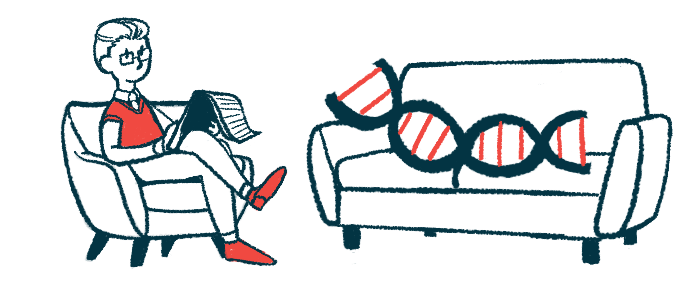SMA gene therapy GC101 safe, effective in children, adolescents
Small study shows drug improves or stabilizes motor function

Gene therapy GC101 safely improves or stabilizes motor function in children and adolescents with spinal muscular atrophy (SMA) types 2 and 3, a small study reports.
Genecradle Therapeutics is also running three Phase 1/2 clinical trials to test the gene therapy in people with SMA type 1 (NCT05824169), SMA type 2 (NCT05901987), and SMA type 3 (NCT06421831).
“The current study demonstrated that [a single dose] of GC101 was safe and effective for treating patients aged 6 months to 18 years who were diagnosed with type II or type III SMA,” researchers wrote.
The study, “Single-dose GC101 gene therapy for spinal muscular atrophy types II and III: an open-label single-arm study,” was published in the World Journal of Pediatrics.
SMA gene therapy found safe in nonhuman primates in preclinical studies
In most cases of SMA, defects in the SMN1 gene lower the production of SMN, a protein essential for the functioning of motor neurons, the nerve cells that control voluntary movement. Without SMN, motor neurons degenerate, giving rise to SMA symptoms. The disorder is divided into five main types that differ in severity, age at symptom onset, and life expectancy.
GC101 is a gene therapy that uses a harmless adeno-associated virus serotype 9 (AAV9) to deliver a healthy copy of the SMN1 gene to motor neurons. The goal is to boost SMN levels and restore the function of nerve cells.
In preclinical studies, GC101 was found to rescue disease manifestations in a mouse model of SMA type 3 and to be safe in nonhuman primates.
In this report, researchers in China describe the results of a small clinical study (ChiCTR2100054441) that evaluated GC101 in six people with SMA type 2 and three with SMA type 3, ranging in age from 6 months to 17 years. Following a one-time GC101 treatment delivered via intrathecal (IT) injection into the spinal canal, patients were monitored for up to one year.
“As types II and III SMA patients present less severe manifestations and longer-term survival, it is imperative to assess the safety and efficacy in types II and III SMA patients across a broader age range,” the researchers wrote.
Improvements seen in several areas
Results showed that the three patients younger than 2 years old, all of whom had SMA type 2, showed a clinically significant response to GC101 in motor function, as indicated by the Children’s Hospital of Philadelphia Infant Test of Neuromuscular Disorders (CHOP-INTEND).
Among the six patients older than 2, four (one with SMA type 2 and three with type 3) showed clinically meaningful improvement in their Hammersmith Functional Motor Scale-Expanded (HFMSE) scores, which assess skills such as rolling, sitting, crawling, and standing. Of these, two also achieved clinically meaningful improvements in scores for the Revised Upper Limb Module (RULM) that measures upper limb function.
The oldest patient, who has SMA type 2, was almost 18 years old and showed no change in HFMSE scores and a modest increase in RULM scores during the follow-up period.
Two SMA type 3 patients who could walk showed clinically meaningful improvement in the six-minute walking test, a motor assessment that measures the distance walked in six minutes. A duck-like waddling gait seen in both patients before treatment was lessened after GC101 treatment.
Our study demonstrated that single-dose IT injection of AAV9-mediated GC101 is safe and effective for treating patients with types II and III SMA.
Overall, five patients who had been experiencing motor regression regained gross motor skills after GC101. Separately, one child could now crawl on hands and knees and was later able to walk with assistance, a second child could jump at the end of follow-up, and a third child improved from jumping forward to jumping up on a jump box. Two patients remained stable throughout follow-up.
All potential drug-related adverse events (AEs) were transient and mild or moderate in severity. A serious AE was reported in one patient due to pneumonia, which was considered unrelated to the use of GC101, the team noted. Another patient had an elevation in AST, a marker of liver injury, but was asymptomatic and required no treatment. No deaths or patient withdrawals due to AEs were reported.
“Our study demonstrated that single-dose IT injection of AAV9-mediated GC101 is safe and effective for treating patients with types II and III SMA,” the researchers concluded. “Further studies with larger sample sizes and longer observation periods deserve to be carried out to further understand the safety and efficacy of GC101 in types II and III SMA patients.”









